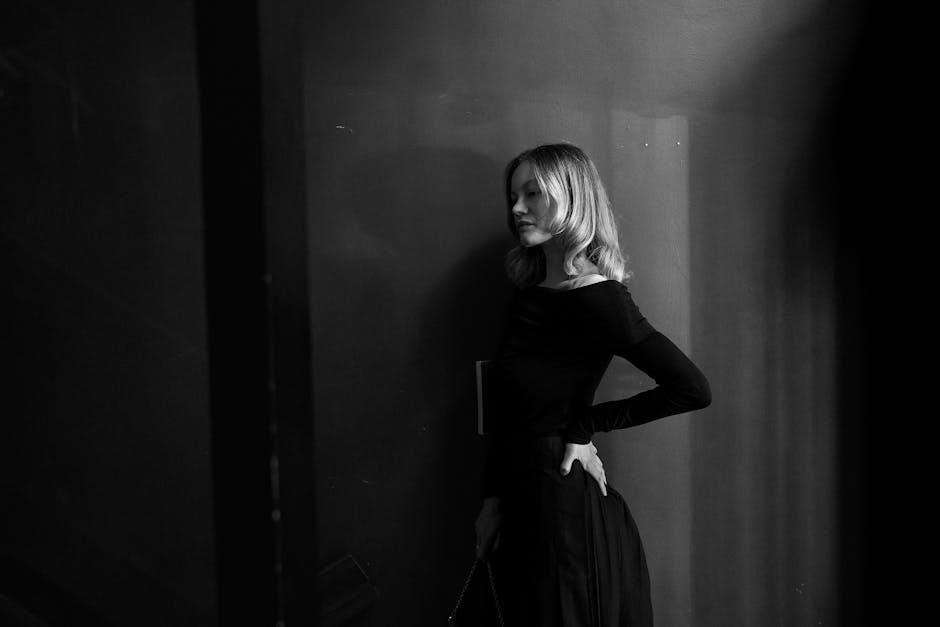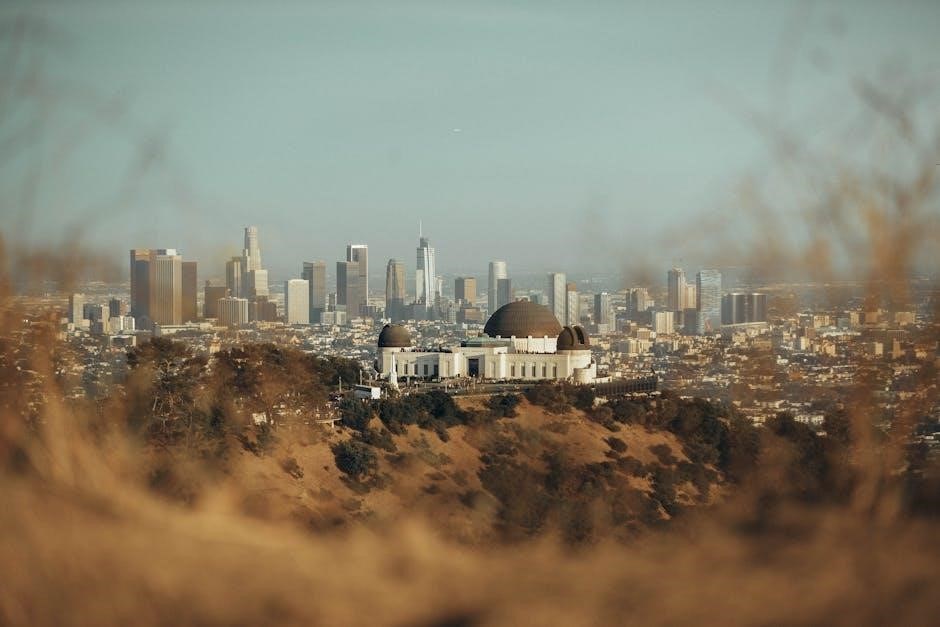La Bête à 7 Têtes et 10 Cornes is a legendary creature symbolizing power and chaos, often depicted in mythological and religious narratives as a multi-headed beast.
Overview of the Legendary Creature
La Bête à 7 Têtes et 10 Cornes is a fascinating and complex mythical creature, often depicted as a massive, multi-headed beast with immense power and symbolic significance. Its seven heads and ten horns evoke imagery of dominance, chaos, and divine judgment, making it a central figure in various mythological and religious narratives. The creature’s origins trace back to ancient texts and traditions, where it represents both destruction and transformation. Its multiple heads symbolize diversity, adaptability, and the ability to reign over vast territories, while the horns signify strength and authority. This legendary being has captivated cultures worldwide, inspiring artistic, literary, and religious interpretations across centuries. Its allure lies in its enigmatic nature, blending fear and awe in those who encounter it.
Significance in Mythology and Religion
La Bête à 7 Têtes et 10 Cornes holds profound symbolic meaning in various religious and mythological traditions, often representing chaos, evil, or divine judgment. In biblical contexts, it is linked to apocalyptic visions, embodying the forces of darkness and rebellion against the divine order. Across cultures, the multi-headed beast signifies the struggle between good and evil, with its seven heads and ten horns symbolizing completeness and universal power. It serves as a metaphor for human sin and the ultimate triumph of righteousness. This creature’s imagery has been used to inspire fear, reflection, and hope, making it a central motif in religious narratives and eschatological beliefs.

Historical Origins of the 7-Headed, 10-Horned Beast
The 7-headed, 10-horned beast traces its roots to biblical apocalyptic visions and ancient mythologies, symbolizing chaos and divine judgment across cultures.
Biblical References in the Book of Revelation
The 7-headed, 10-horned beast is prominently featured in the Book of Revelation, symbolizing evil and chaos. Revelation 13 describes it rising from the sea, embodying Satan’s power and deception. The seven heads represent seven kingdoms, and the ten horns signify power and authority. This imagery has been interpreted as a symbol of evil forces opposing God, with the beast’s ultimate defeat prophesied in Revelation 19. Christian theology often views the beast as a representation of the Antichrist, emphasizing its role in end-time prophecies and the final judgment.
Cultural Symbolism Across Ancient Civilizations
The 7-headed, 10-horned beast appears in various ancient mythologies, often symbolizing chaos, power, and divine judgment. In European folklore, it resembles dragons embodying evil forces. Similarly, the Greek Hydra and Mesopotamian motifs depict multi-headed creatures as symbols of uncontrollable power. In Norse mythology, the Midgard Serpent, while not identical, shares themes of cosmic chaos. The beast also appears in Chinese mythology as a symbol of balance and transformation. Across civilizations, it represents both destruction and the struggle for order, reflecting humanity’s fear of the unknown and the eternal battle between light and darkness. Its imagery transcends cultures, becoming a universal symbol of complexity and duality.
Religious and Eschatological Interpretations
The 7-headed, 10-horned beast symbolizes evil forces and divine judgment in religious texts, often linked to eschatological themes of end times and cosmic battles between good and evil.
Christian Perspectives on the Beast
In Christian theology, the 7-headed, 10-horned beast is a central figure in the Book of Revelation, symbolizing evil and opposition to God. It represents the Antichrist, embodying corruption and tyranny, and is often linked to the end times. The seven heads signify completeness and perfection in wickedness, while the ten horns symbolize power and authority. Christians interpret the beast as a manifestation of Satan’s influence on Earth, fostering chaos and rebellion against divine rule. Its ultimate defeat by Christ signifies God’s triumph over evil, reinforcing the eschatological hope of redemption and the establishment of a righteous kingdom.
Jewish and Islamic Views on the Symbol
In Jewish tradition, the 7-headed, 10-horned beast is often linked to historical oppressors, such as the Roman Empire, symbolizing persecution and divine judgment. It is seen as a representation of rebellion against God’s will. In Islamic eschatology, the beast is associated with the Dajjal, or the False Messiah, who will appear before the end times, spreading chaos and deception. The seven heads may symbolize the seven gates of Hell, while the ten horns represent the ten tribes of disbelief. Both traditions emphasize the beast as a harbinger of eschatological events, warning believers to remain steadfast in their faith and moral integrity.
Literary and Artistic Depictions
The 7-headed, 10-horned beast appears in various literary works and films, symbolizing chaos and power. Bertrand Bonello’s film La Bête explores its essence in a futuristic context, while literary adaptations often depict it as a metaphor for societal corruption and divine judgment.

Modern Literature and “La Bête à Sept Têtes”

In modern literature, “La Bête à Sept Têtes” continues to captivate audiences through innovative reinterpretations. Bertrand Bonello’s film La Bête reimagines the creature in a futuristic world dominated by artificial intelligence, exploring themes of power and control. Similarly, contemporary authors and illustrators have revisited the myth, blending traditional folklore with modern storytelling. For instance, an illustrated version of La Belle et la Bête by Jul was controversially deemed too mature for young readers, sparking debates about the role of mythology in education. These works highlight the beast’s enduring symbolism, reflecting societal anxieties and the timeless struggle between good and evil.
Artistic Representations in Various Media
The beast has been vividly portrayed across various art forms, captivating audiences worldwide. In cinema, films like La Bête by Bertrand Bonello and La Belle et la Bête by Bill Condon offer visually stunning interpretations, blending fantasy with deeper symbolic meanings. Illustrations by artists such as Jul have brought the creature to life in contemporary literature, while theater productions and video games further explore its mythological essence. Each medium adds a unique layer to the beast’s legacy, ensuring its presence remains strong in modern culture and imagination. These representations not only entertain but also inspire reflection on the creature’s cultural and historical significance.

Contemporary Relevance and Popular Culture
The beast remains a captivating figure in modern media, inspiring films, literature, and art. Its symbolic power continues to spark curiosity and cultural dialogue today.
The Beast in Film and Television
The beast has captivated audiences in various film and television adaptations, symbolizing power and chaos. Bertrand Bonello’s La Bête explores a futuristic world dominated by artificial intelligence, while adaptations of La Belle et la Bête reimagine the creature in romantic and fantastical contexts. Henry James’ The Beast in the Jungle was adapted into a film, blending psychological drama with metaphorical interpretations of the monster. Modern cinema continues to draw inspiration from the beast’s iconic imagery, using it to represent societal fears and existential threats. Its versatility ensures its enduring relevance in visual storytelling, making it a timeless symbol in contemporary media.
Symbolism in Modern Society
La Bête à 7 Têtes et 10 Cornes serves as a powerful symbol in modern society, representing global instability, societal fears, and existential threats. Its multi-headed nature often signifies the complexity of modern challenges, such as political turmoil, technological dominance, and environmental crises. The beast is frequently used in media and art to critique power structures and ideologies. It also reflects personal struggles, like addiction and mental health, as seen in literary works. By embodying chaos and transformation, the creature sparks conversations about resilience and change. Its enduring presence in culture highlights humanity’s ongoing grappling with uncertainty and the need for collective action against overwhelming forces.